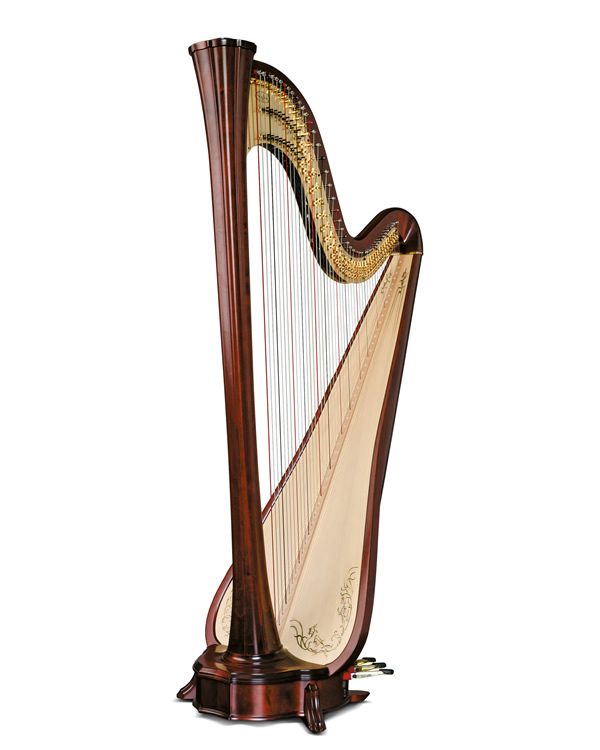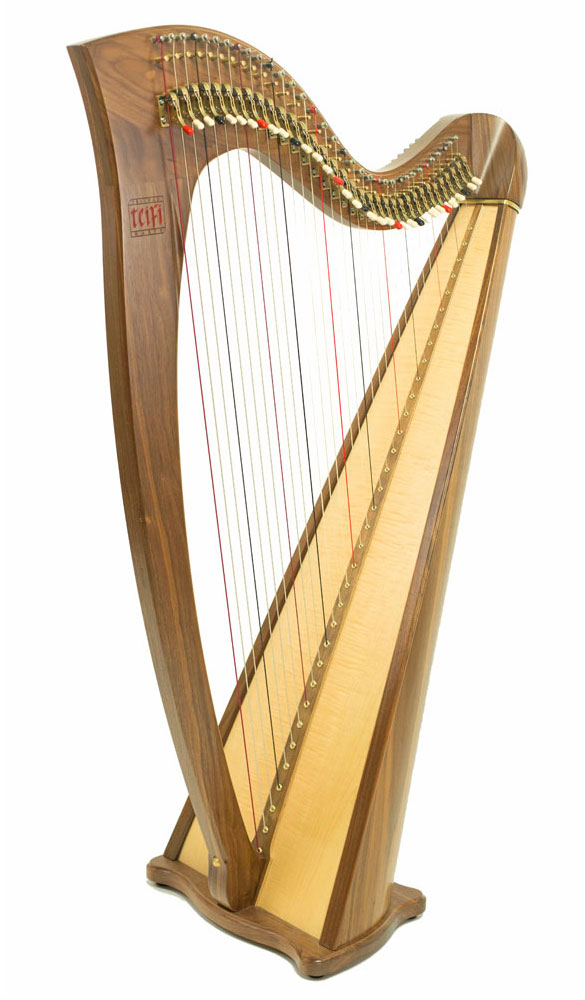
 Back to previous page
Back to previous page
No! At least, no more so than any other instrument. Learning to play an instrument will obviously takes a certain amount of dedication and practise, but it doesn't require any special skill or physical attribute (short nails, though, are kind of a must - sorry!).
Yes! There is absolutely no requirement to have learned to play an instrument before starting on the harp, any more than there is to have learned how to swim before learning how to play rugby. Musical experience will obviously help, but everyone has to start somewhere - why not begin with the harp! It's actually a great instrument for beginners as it sounds lovely right from the start, no matter how simple the music.
No! I can obviously help you to learn to read music, but prior knowledge is definitely not a requirement. I actually prefer to teach all beginners by ear at first to allow them to focus on technique and to develop their aural skills. In the same way that children do not learn to read before they can speak, I think it is important to develop a sense of musicality before getting to grips with the reading and writing of music. I am in fact an enormous fan of music theory and consider it extremely fascinating to understand how and why music works (I promise you, it's not as hard as it looks!), but it is not necessary to learn in order to play.
Absolutely - in fact, I often find myself with more adult pupils than children! There is no upper age limit on learning the harp. If you want to fulfil that long-held ambition, I would be delighted to help you.
If your child has expressed an interest in learning the harp, I can only say (as one of those children myself) that if you are able to let them try it, they will probably be very thankful!
However, I do recognise that the harp can be an intimidating instrument to explore - they are big, expensive, and relatively rare. The first thing I would recommend you do is try to find a local harp teacher or harp group, and get a trial lesson so that your child can have a go. They may fall in love, or they may decide that the harp isn't for them at all and ask you for a drum kit.*
*This has happened.
In terms of actually acquiring an instrument, all harp teachers know and understand that harps are expensive, and that buying one can be a daunting prospect, not to mention a considerable investment. I am extremely aware of the financial barrier to entry when it comes to learning the harp and am constantly looking for new ways to make it as accessible as possible. The best solution at first is to hire a harp - there are a number of ways to do this, many of which are extremely reasonable and allow you to try the instrument out without too much financial commitment. You could:
I do not recommend buying a cheap small harp (of the decorative kind usually found on ebay) as a 'starter' harp - apart from the huge variety in quality, you will find that you will very quickly outgrow it as an instrument, and whilst they seem inexpensive compared to those sold by many specialised harp makers, they are also not THAT cheap - the couple of hundred pounds you might have spent on one would easily allow you hire a good quality harp for several months which will give you a much better feel for the instrument. These harps also have almost no resale value. In the event that you take the plunge and buy a harp, and then you or your child does decide to stop playing, a harp from a reputable maker will keep a lot of its value and will be fairly easy to re-sell.
I strongly recommend renting a harp for a few months before buying your own - not just to give you chance to learn and decide whether you like it or not, but because there are many different makes and types of harp out there. Once you can play even a little bit, you'll be in a better position to judge what type of sound you prefer. Wherever possible, I suggest you try out the make of harp (or the harp itself, if you can!) you're considering buying. Your local Clarsach Society branch may be able to help you (harpists are a friendly bunch and are generally very happy to let people have a go on their instruments at meetings!), or you can contact the maker you're interested in and try find a stockist. If you can, it's always fascinating to see round a maker's workshop - many will be happy for you to visit if you call in advance to arrange this.
As mentioned above, I do NOT recommend buying a cheap small harp (of the decorative kind usually found on ebay) as a 'starter' harp - see above 'how do I get hold of a harp to try it?'. They are often of dubious quality and you will find you quickly outgrow it. They also have very little resale value - far better to spend the money on hiring a good quality harp for a few months which will give you a much better feel for what a good harp should feel and sound like. If you then decide you want to buy, there are a number of ways to lessen the financial burden - you could look for a second-hand harp, for example (try Affairs of the Harp), and many makers offer hire-to-buy plans. Some local authorities also have schemes to enable children to buy instruments VAT free through their school.
If you are interested in browsing to get some idea of available models and prices, here is a list of reputable harpmakers, in no particular order:
There are many others - this is not an exhaustive list by any means! If in doubt, try the harp yourself if you can.
Are you sitting comfortably...?

Harps can be very broadly divided into two categories: the Classical (pedal) harp and the Celtic (lever) harp.* The Classical harp is the large instrument you will see being played in orchestras. A full size one will have 47 strings, be around 6 feet tall and weigh around 36kg (5 stone 6, or your average 11 year old). They use pedals to create sharps and flats, and are mostly (though not exclusively) used for playing classical and orchestral music.
The Celtic harp (the instrument I play and teach) goes by a number of names: generally speaking, the terms 'lever harp', 'Celtic harp', 'small harp', 'clarsach' (the Gaelic term for the harp), and 'folk harp' all refer to the same instrument. You will also occasionally hear it referred to the as the 'Irish Harp' or 'Scottish Harp'.

As the name suggests, the lever harp (my preferred term) uses levers instead of pedals to change key, and these are operated by the left hand. There is no standard size of harp or number of strings (although 34 is the most common number of strings - see below), but on average a lever harp will be around 4 feet tall and weight around 10kg (1.6 stone, or your average 1-year old).
Many people imagine that a small 'lap' harp will be easier to play than a larger one. This is actually not necessarily true - a bigger floor-standing harp is usually much easier for beginners as it doesn't need to be supported on the knee by the player, freeing up the hands (and concentration) for playing.
Just as there is no standard size for (say) cars, there is no standard size for harps. Each maker will have a design that they consider gives the best combination of sound and aesthetics, and it is largely a matter of personal preference which you prefer.
The most common number of strings for a lever harp is 34, ranging from two Cs below middle C to three As above.
I would recommend a 34-string harp for beginners as they allow a wide range of pieces to be played and there is no fear of 'growing out' of the instrument after a few months, which you may find with smaller harps. (For those who are interested in taking exams, 34 is also the minimum number strings needed for the repertoire). A 34-string harp will take you all the way from beginner to professional level of playing.
36-string harps are also not uncommon - they tend to be slightly bigger instruments all round and are often favoured by professionals who like a bigger sound. The extra two strings are nice to have, but not strictly necessary!
You will also come across 26 or 27-string harps - these usually range from the C below middle C to the G or A three octaves above middle C.
Obviously, smaller harps are easier to transport, but the range of pieces that can be played on a smaller harp is more restricted than on a larger one, and because there is less room for the hands they can actually be more difficult to play and require some rearranging of music. As you gain more experience you will get to know what will suit your requirements - it's unlikely that you'll know from the start what is best for you, so don't be afraid to discuss things with your teacher - they will be happy to help! Many people find that at some point they end up with two harps - a bigger one for performances and a smaller one for travelling/taking to sessions.
There are, you will find, many different types of harp with different numbers of strings - the above are just the most common types!
* The South American harp is also growing in popularity in the UK, and this has its own fascinating history
Harp strings are commonly made of gut (from cows), nylon, or carbon fibre. Gut tends to give a warmer sound and higher tension, nylon a brighter sound and lower tension. Carbon fibre falls somewhere in-between. The type of strings you choose is really down to personal choice (although pedal harps are, to my knowledge, invariably strung with gut. I'm entirely sure it would in theory be possible to get one strung in carbon fibre, though, for the vegetarians and and vegans out there!).
Strictly speaking, a 'harpist' is somebody who plays the Classical harp, and a 'harper' is someone who plays the lever harp, although these days the term 'harpist' is more commonly used to refer to either, especially in England.
Linguistics lesson coming up:
The word 'harp' is of Germanic origin and has a corresponding verb: 'to harp' (which we still use in the form 'to harp on about'). In Old and Middle English, then, one who harps was a harper, just as one who sings is a singer, and one who drums is a drummer (all words of Germanic origin). The word was used to refer to players of the only harp in existence in Britain at the time - the folk harp - and thus it is still often used to describe players of this instrument.The same word 'harp' was also adopted into Romance languages, such as Italian ('arpa') and French ('harpe'). However, because words in Romance languages are more frequently inflected than those in Germanic ones (i.e. root words change their meaning by adding suffixes or prefixes), players of instruments gain the suffix 'ist', e.g. piano - pianist; guitar - guitarist, etc. (Note how there are no corresponding verbs such as 'to piano' or 'to guitar'; these are instruments whose names have a Romance origin rather than Germanic.) When the Classical harp was introduced from continental Europe, the term 'harpist' came with it, and we still use this to refer to players of the Classical harp
You're welcome.